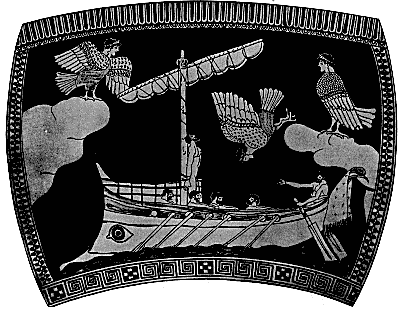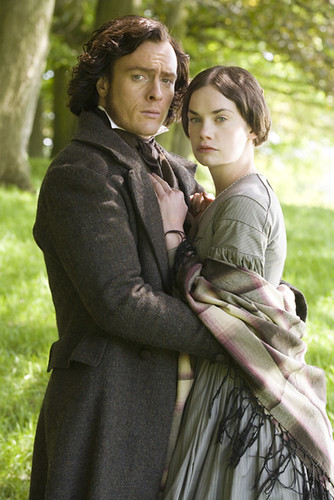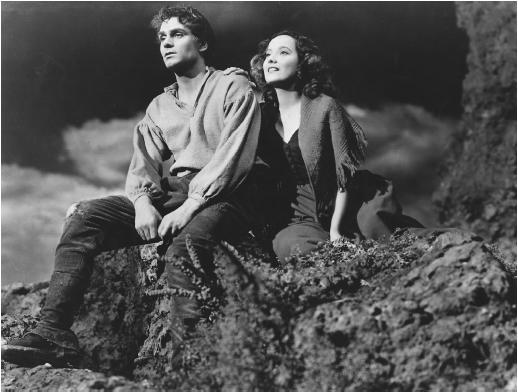 Here is the format for the midterm. Just plug in information from the study guides.
Here is the format for the midterm. Just plug in information from the study guides.
EN 201 – Objective Essay Questions (40 pts) – This part of the exam is closed-book/closed-notebook.
Match-up (pts) (10 pts – 5 pts. per section)
Match the god with the identifying characteristic. (1 pt. per correct answer)
1. Athena a. Escorted Priam to Achilles.
2. Poseidon b. Borrowed the Bull of Heaven from Dad.
3. Ishtar c. Helped both Odysseus and his son
4. Hermes d. Was the mother of one of Homer’s heroes.
5. Thetis e. Tried to avenge his son, Polyphemus
Match the work with an identifying characteristic. (1 pt. per correct answer)
1. Book of Job a. Was recently translated by Seamus Heaney.
2. Gilgamesh b. Does Ian McKellan have more cultural capital than
Al Pacino?
3. The Iliad c. Seeks immortality but loses the herb.
4. Beowulf d. The poet sings of the hero’s wrath.
5. Richard III e. Begins with a bet between God and the Devil.
Multiple Choice (15 pts – 3 pts. each)
1. Which of these qualities apply to the epic?
a. Must have no known author.
b. Retells actions of national or cosmic importance.
c. Must have been written in Greek or Latin originally.
2. Which of these heroes has a goddess for a mother?
a. Gilgamesh b. Odysseus
c. Hector
3. Which author accompanied Dante through the Inferno?
a. St. Augustine b. Homer
c. Virgil
4. Which of these works dates from stories told during the Early Middle Ages?
a. Beowulf b. The Divine Comedy c. The Aeneid
5. According to Daniel’s presentation, could the Sirens in The Odyssey have been….
a. monkeys b. monk seals
c. Odysseus’ maids
Short Answer (15 pts. -- 5 pts each)
1. List videos that we have seen or web sites that we have listened to.
2. List five characteristics of the epic, based on what we have read for this class.
3. List five facts or opinions that you have learned about world literature from your classmates’ presentations or the Power Points at WebCT so far.
Extra Credit (up to 10 points—5 points each):
a. List up to five ways that your journal or blog has helped you.
b. List up to five ways that my blog has helped you.
----------------------
EN 201 – Subjective Exam Essay Prompts (60 pts)
Please answer one of the prompts below. This is an open-book test, and you may consult your notebook (including prewriting for this exam) as well. You may also use a dictionary, a thesaurus, and correction fluid. Be sure to double space this exam, leaving one-inch margins on all sides and numbering each page. You may use both sides of the paper, however. Take your time.
1. Twentieth-century thinker Joseph Campbell has encouraged us to see ourselves as the heroes of our own lives and our own quests. How is this viewpoint compatible with the epic’s attitude towards the hero? How is this viewpoint compatible with that of a contemporary novel like The Penelopiad? Or that of a contemporary movie? How is it incompatible? Discuss up to three heroes from our readings so far. Consider which tradition each hero and his epic belong to. Consider the distinction between an epic’s hero and a novel’s protagonist. (Would you call Penelope the heroine of Atwood’s novel? Why? Why not?) To which extent does genre affect depiction of character? Feel free to bring in ideas from your classmates’ presentations, the excerpts we saw from Campbell’s video and Upstairs, Downstairs, our blogs and/or journals, and class discussion. Remember that Joseph Campbell’s work did not focus on literature or even world literature but on world mythologies and that Bill Moyers interviewed Campbell at a time when Americans vividly remembered the conflicts surrounding the Vietnam War.
2. In the introduction to What Is World Literature?, David Damrosch passes judgment on contemporary critics’ attempts to downplay older works in world literature. He, in fact, argues: “All too often, students of imperialism, colonialism, nationalism, and globalization do indeed define their topics in such a way as to restrict their investigations to just the last five hundred years of human history, or the last hundred years, or even the last few years.” He then goes on to describe this critical trend as “presentism” (italics his), a quality that leads to intellectual superficiality. Discussing up to three works that we have read so far, argue for or against the importance of reading earlier works of world literature, both Western and Eastern. Why is it important to read The Ramayana alongside Gilgamesh or The Mahabharata alongside The Iliad? On the other hand, in order to give readers a stronger sense of world literature’s global qualities, should we emphasize geography and culture over history? Would it be better to read the excerpts from the Mahabharata and the Ramayana alongside a modern work from India? Or should we be reading more works from Ancient Greece and Rome? How can we avoid superficiality in a world literature course? Feel free to bring in ideas from Joseph Campbell’s video; Michael Wood’s videos (In Search of the Trojan War); the excerpts we saw from Looking for Richard, etc.; your fellow students’ presentations; and class discussion of the epic’s orality and Margaret Atwood’s The Penelopiad. Consider that EN 201 fulfills one of the requirements for your degree. Consider that this course’s reading list includes a novel from 2005 and that we began the course by watching two films from the 1990s.
3. Discuss the roles that women and goddesses have played in up to three works that we have read. Ought we consider goddesses like Ishtar, Athena, Hera, and Thetis women in literature? Ought we consider Grendel’s mother in this category as well? (And why must Beowulf fight Grendel’s mother and not his brother or father?) Furthermore, are these women represented fairly? Feel free to bring in ideas from class discussion about The Penelopiad and other reworkings of classic literature as well as from my blog entries. Consider the portrayal of women in the excerpt of Upstairs, Downstairs that we saw. Consider the role that class or genre may play in the depiction of women, especially in The Odyssey and The Penelopiad but also in the films that we’ve seen.
- At this point in the semester, all of the works that we’ve been reading are epics (or, in the case of Job,) have been considered epics. An epic is a long verse narrative about a deed of national or cosmic importance, which a hero, often of divine parentage, accomplishes. The epic is a prestigious genre: Gilgamesh was written down by a priest, Homer’s epics were taught in the Greek schools, and the emperor Augustus strongly supported Virgil’s writing of The Aeneid, an epic that we won’t be reading. The epic is often grounded in history, as the search for Troy has revealed, although, as Richard III’s example shows, other genres are grounded in history as well. In addition, many epics began as tales told to their audiences. Given these elements, how has beginning with the epic shaped your view of world literature? Which qualities of literature have been obscured? Which types of characters and experience are being obscured? [Recently literary scholar Margaret Anne Doody has examined the novel’s origins in Greek and Roman literature. Previous histories of the English-language novel began much later, and Doody links their unwillingness to go back as far as she has to classical scholars’ disdain for the novel.] Could one write an epic today? Why? Why not? Alternately, can we speak of epic films? Or is the epic strictly a literary genre? Why? Why not?
- Inspired by his reading of Homer’s epics, the German businessman Heinrich Schliemann trained as an archaeologist and traveled to Turkey and Greece to find the site of Ancient Troy. The American academic Carl Blegen continued Schliemann’s excavations, and Project Troia, in turn, carries on this task. To look at another example, even today, The Richard III Society defends the historical king against Shakespeare’s depiction of him, and a statement by this group appears in the program of the Shakespeare Theater’s current production of Richard III. Why does literature’s grounding in historical fact matter? Why do literary representations of the past matter? Should either continue to matter? Or does the search for the historical Troy or the debate over Richard III get in the way of our appreciating literature?
6. Discuss the roles that power has played in the literature we’ve read and the movies we’ve watched in class. Do these roles change from genre to genre (epic to novel to film to television program) or from culture to culture? Who holds power in each of the works we’ve read or watched? Who does not? What does power allow one to do? Also, is there a gap between who is *supposed* to hold power and who actually does?
 The picture above is of Senegalese singer/actor Youssou N'Dour who played author Olaudah Equiano in the 2007 movie Amazing Grace.
The picture above is of Senegalese singer/actor Youssou N'Dour who played author Olaudah Equiano in the 2007 movie Amazing Grace.

 The picture above is from a NYC production of Oroonoko, Nigerian author Biyi Bandele's 1999 adaptation of Behn's novel. I hope that this play comes to the DC area! Until then, here is a link to the site for the NYC production:
The picture above is from a NYC production of Oroonoko, Nigerian author Biyi Bandele's 1999 adaptation of Behn's novel. I hope that this play comes to the DC area! Until then, here is a link to the site for the NYC production: Now let's have something more than this picture of Martin Sheen as Willard!
Now let's have something more than this picture of Martin Sheen as Willard! This study guide will be the first of three or four that I will put up before our midterm on March 5 and 7. To begin with, I will focus on the genre of life writing, a form of history that focuses on individuals' lives and a form of literature that provides evidence about individuals' real lives. This genre is non-fiction, unlike plays, poems, short stories, or novels. Documentary films that narrate a person's life story could be considered in this category, but life writing generally consists of autobiographies, memoirs, biographies, letters, and diaries. Novels may take on the form of life writing, but this is simply a device to intrigue people or perhaps even to further mimesis (the imitation of reality).
This study guide will be the first of three or four that I will put up before our midterm on March 5 and 7. To begin with, I will focus on the genre of life writing, a form of history that focuses on individuals' lives and a form of literature that provides evidence about individuals' real lives. This genre is non-fiction, unlike plays, poems, short stories, or novels. Documentary films that narrate a person's life story could be considered in this category, but life writing generally consists of autobiographies, memoirs, biographies, letters, and diaries. Novels may take on the form of life writing, but this is simply a device to intrigue people or perhaps even to further mimesis (the imitation of reality). As we finish up our unit on novels and life writing, I thought that I'd show some movies based on canonical 19th century novels. These movies will make for an interesting bridge between Harriet Jacobs' Incidents in the Life of a Slave Girl and Mariama Ba's So Long a Letter.
As we finish up our unit on novels and life writing, I thought that I'd show some movies based on canonical 19th century novels. These movies will make for an interesting bridge between Harriet Jacobs' Incidents in the Life of a Slave Girl and Mariama Ba's So Long a Letter.








 Although we won't be starting the drama unit for a little while yet, I thought I'd post an entry about a play that my husband and I saw this evening...the Japanese play Shintoku-Maru, directed by Yukio Ninagawa. The play was written during the 1970s, so it is a good example of more modern theater, especially in its reliance on spectacle and refusal to confine itself to realism. The performance was entirely in Japanese, but the visuals and the acting were amazing. The actors received two standing ovations, and, well, you can see some of the visuals from the picture above.
Although we won't be starting the drama unit for a little while yet, I thought I'd post an entry about a play that my husband and I saw this evening...the Japanese play Shintoku-Maru, directed by Yukio Ninagawa. The play was written during the 1970s, so it is a good example of more modern theater, especially in its reliance on spectacle and refusal to confine itself to realism. The performance was entirely in Japanese, but the visuals and the acting were amazing. The actors received two standing ovations, and, well, you can see some of the visuals from the picture above. The actor playing Shintoku (Tatsuya Fujiwara) has appeared in a number of the director's productions, including a very torrid-looking Romeo and Juliet. Here are some pictures from a 2001 or 2002 production of Shintoku-Maru in Japan:
The actor playing Shintoku (Tatsuya Fujiwara) has appeared in a number of the director's productions, including a very torrid-looking Romeo and Juliet. Here are some pictures from a 2001 or 2002 production of Shintoku-Maru in Japan: Above is an 18th-century illustration from Samuel Richardson's Clarissa, one of the novels that literary scholar Ian Watt considered among the origins of the genre.
Above is an 18th-century illustration from Samuel Richardson's Clarissa, one of the novels that literary scholar Ian Watt considered among the origins of the genre.